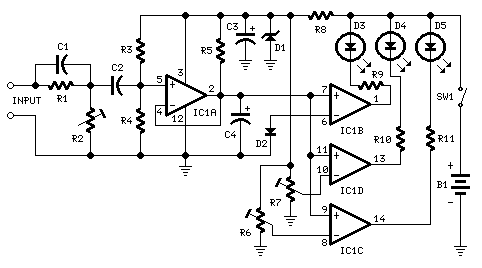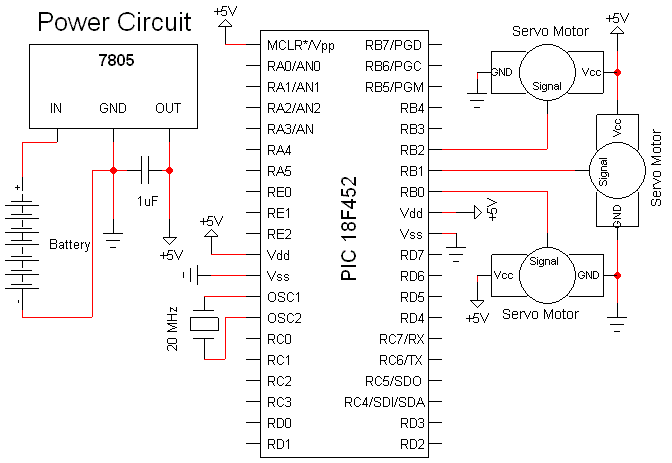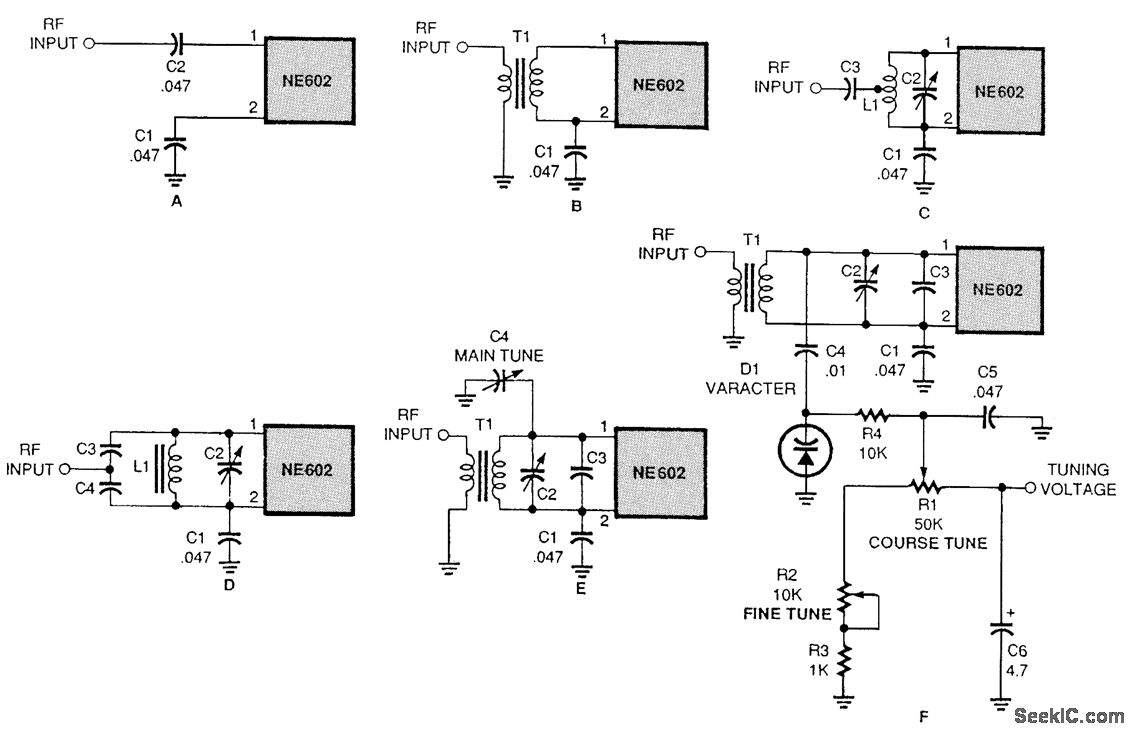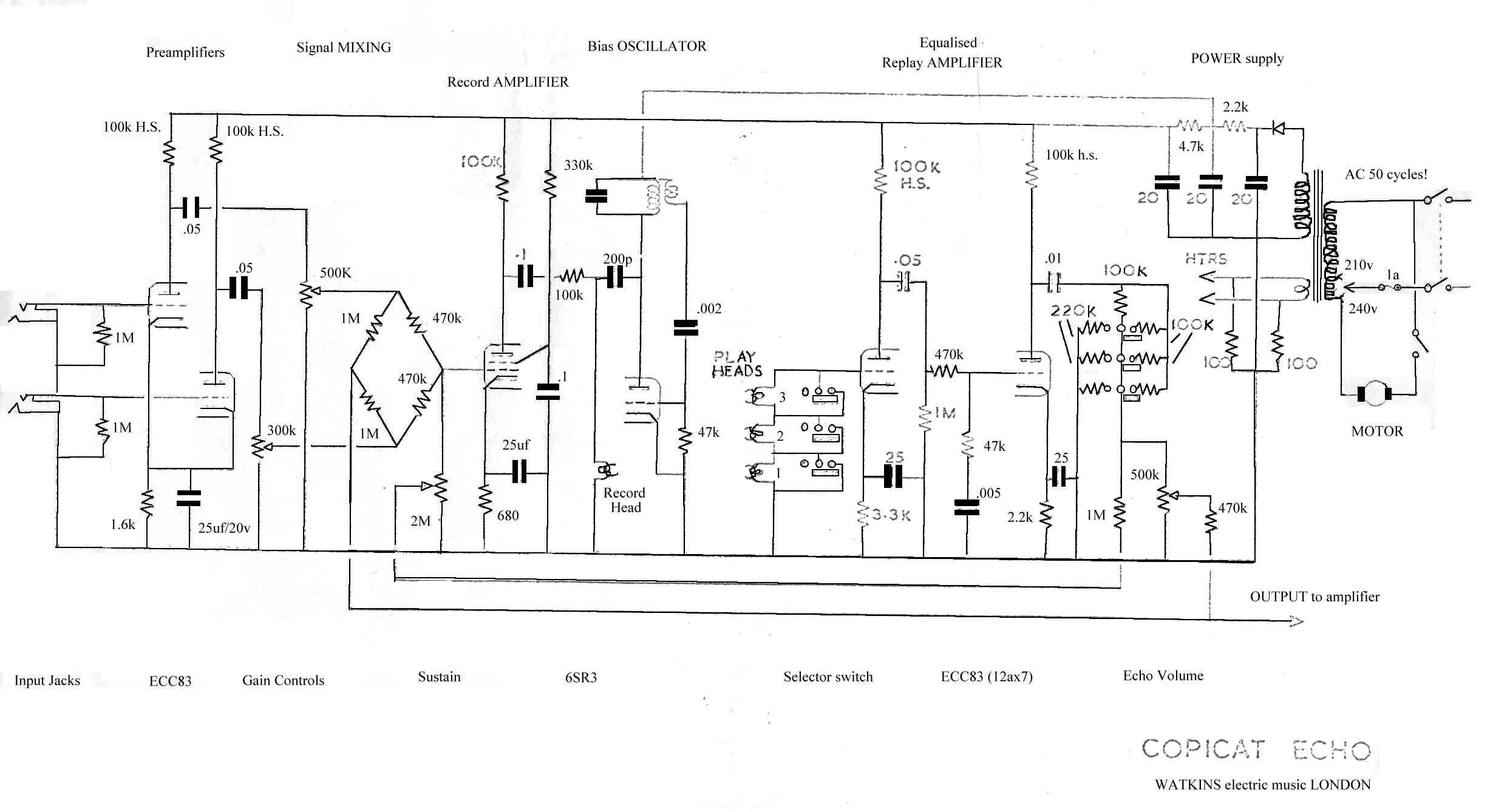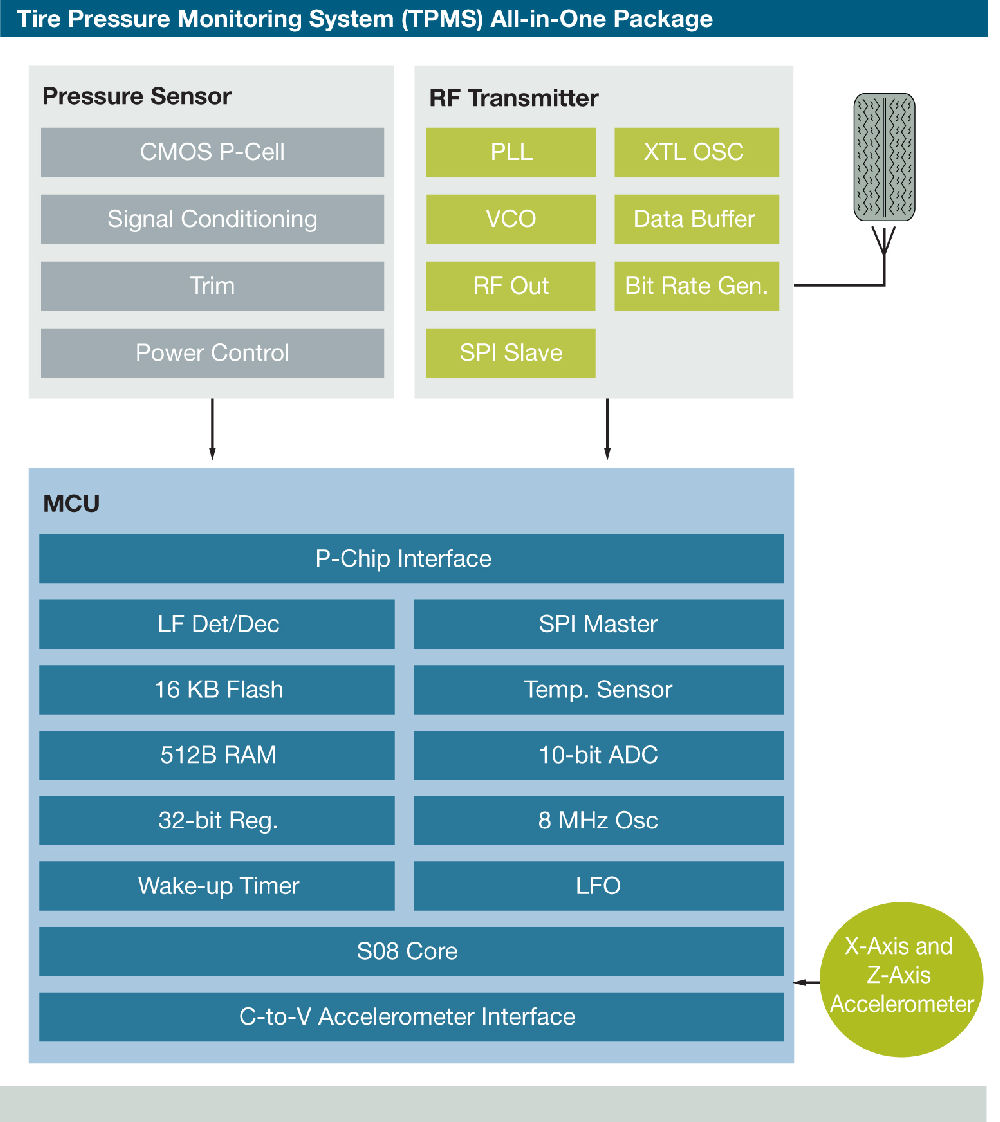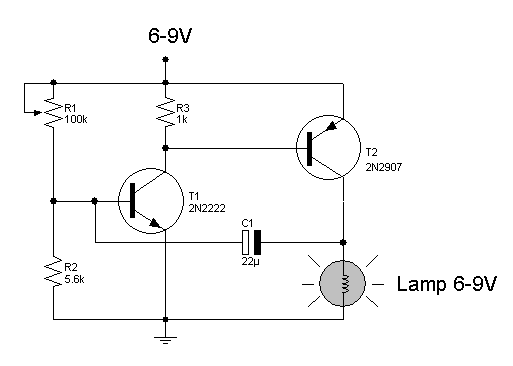
100w audio amplifier with integrated circuit
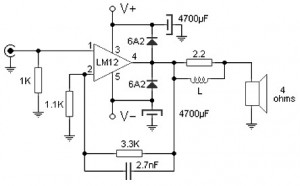
Almost all audio power amplifiers utilize integrated circuit amplifiers, such as the M12CLK, which is a power operational amplifier. This amplifier allows for an output stage that operates at an impedance of 2 ohms and provides a power gain of 150W. For stability and safety, the system is designed to work with 4-ohm speakers, resulting in an output of 100W RMS power. The power supply transformer must deliver 24V + 24V AC on its secondary winding, with a current rating of 5A for a mono stage or 10A for a stereo configuration. To achieve a current of 15A, four diodes can be used; however, it is recommended to employ a metal rectifier bridge, which should be mounted on an appropriate heat sink.
The audio power amplifier circuit based on the M12CLK operational amplifier is designed to provide robust performance with low impedance loads. The choice of a 4-ohm speaker configuration ensures that the amplifier can deliver a reliable 100W RMS output, which is suitable for various audio applications, including home theater systems and professional audio setups. The operational amplifier's ability to handle a 2-ohm load without compromising stability is a significant advantage, allowing for flexibility in speaker selection.
The power supply requirements for this amplifier are critical to its performance. A transformer providing 24V + 24V AC ensures that the amplifier receives adequate voltage for optimal operation. The current specifications of 5A for mono and 10A for stereo configurations indicate the need for sufficient power to drive the amplifier under maximum load conditions. The use of a rectifier bridge made from four diodes is essential for converting the AC voltage from the transformer to a usable DC voltage for the amplifier's operation.
For higher current applications, a metal rectifier bridge is recommended due to its superior thermal management and reliability compared to standard diodes. The heat sink is crucial in dissipating the heat generated during operation, thereby enhancing the longevity and performance of the rectifier bridge and the overall amplifier circuit. Proper thermal management is vital in high-power applications to prevent overheating and ensure stable operation over extended periods.
In summary, this audio power amplifier circuit showcases the integration of a powerful operational amplifier with a well-designed power supply system, ensuring high efficiency and reliability in audio amplification tasks.Almost all of the audio power amplifier if using integrated circuit amplifier as circuit shown here which is use M12CLK is an power operational amplifier. It allows an output stage operating at even 2 ohms impedance and gain power 150W. For stability and safety this system decided to make it work with 4 ohm speakers so we gain 100W RMS power.
The transformer of the power supply must provide 24v + 24v AC in its secondary with a current of 5A for one stage (mono) or 10A for two stages (stereo). While four diodes can be used to make the source 15A is recommended to use a rectifier bridge metal and placed in the corresponding heat sink.
🔗 External reference
The audio power amplifier circuit based on the M12CLK operational amplifier is designed to provide robust performance with low impedance loads. The choice of a 4-ohm speaker configuration ensures that the amplifier can deliver a reliable 100W RMS output, which is suitable for various audio applications, including home theater systems and professional audio setups. The operational amplifier's ability to handle a 2-ohm load without compromising stability is a significant advantage, allowing for flexibility in speaker selection.
The power supply requirements for this amplifier are critical to its performance. A transformer providing 24V + 24V AC ensures that the amplifier receives adequate voltage for optimal operation. The current specifications of 5A for mono and 10A for stereo configurations indicate the need for sufficient power to drive the amplifier under maximum load conditions. The use of a rectifier bridge made from four diodes is essential for converting the AC voltage from the transformer to a usable DC voltage for the amplifier's operation.
For higher current applications, a metal rectifier bridge is recommended due to its superior thermal management and reliability compared to standard diodes. The heat sink is crucial in dissipating the heat generated during operation, thereby enhancing the longevity and performance of the rectifier bridge and the overall amplifier circuit. Proper thermal management is vital in high-power applications to prevent overheating and ensure stable operation over extended periods.
In summary, this audio power amplifier circuit showcases the integration of a powerful operational amplifier with a well-designed power supply system, ensuring high efficiency and reliability in audio amplification tasks.Almost all of the audio power amplifier if using integrated circuit amplifier as circuit shown here which is use M12CLK is an power operational amplifier. It allows an output stage operating at even 2 ohms impedance and gain power 150W. For stability and safety this system decided to make it work with 4 ohm speakers so we gain 100W RMS power.
The transformer of the power supply must provide 24v + 24v AC in its secondary with a current of 5A for one stage (mono) or 10A for two stages (stereo). While four diodes can be used to make the source 15A is recommended to use a rectifier bridge metal and placed in the corresponding heat sink.
🔗 External reference
Warning: include(partials/cookie-banner.php): Failed to open stream: Permission denied in /var/www/html/nextgr/view-circuit.php on line 713
Warning: include(): Failed opening 'partials/cookie-banner.php' for inclusion (include_path='.:/usr/share/php') in /var/www/html/nextgr/view-circuit.php on line 713
